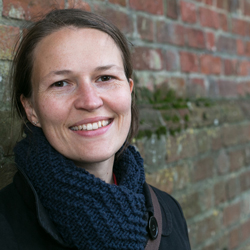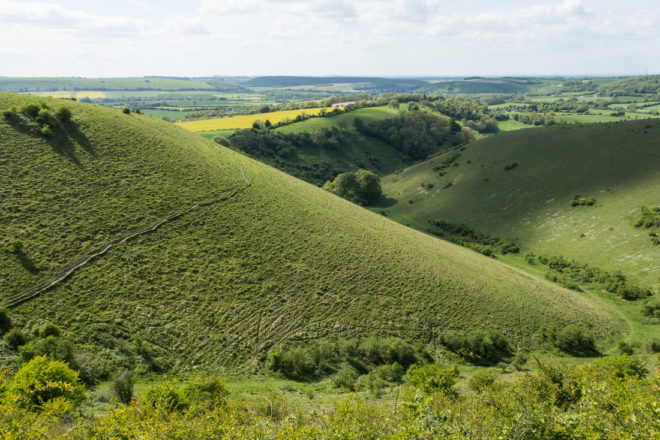Thought piece – “A shared understanding of landscape can integrate us”
May 4, 2021
Ruth Childs is Landscape Officer for the National Park and writes about her experiences as a leading advocate for landscape-led design on the local, regional and European stage.
 Like many specialist areas of work, the environment sector can be a small world.
Like many specialist areas of work, the environment sector can be a small world.
Recently I was reminded of this in a rather lovely way.
Back in 2014/15 I was working as the Landscape Specialist for a County Council. I was fortunate enough to get involved with developing a European-funded Interreg Project alongside other partners in the south east. The project’s concept was about building resilience in coastal communities in the face of a changing climate.
We began attending meetings with potential Dutch, Belgian and French partners from local government, universities and research organisations, developing ideas and looking for common ground. Brainstorms and workshops ensued as each organisation shared their priorities, issues and ideas. The variety of partners and places were significant – coastal cities to rural farmland, coastal flooding to rainfall and surface water problems. We had plenty of ideas, creativity and enthusiasm, but we were struggling to find a hook, something to unite us – a golden thread you might call it!
As the only landscape specialist I spent much of the time, listening (sometimes translating) and talking about landscape function and character. While feeling like a broken record, it suddenly dawned on me – regardless of each partners’ expertise or location, problems or aspirations – we all had landscape in common.
Everyone was seeking to change their landscape in a way that would help them address a whole host of climate-change-related problems. Landscape, or more specifically the European Landscape Convention (ELC), became our golden thread. I was able to convince the partners that framing our problems using landscape meant we could each approach the change we wanted to see, on the open coast or in the city, using the same method – landscape-led design.
Fast-forward, a couple of years, my own circumstances changed and I was offered a job in the private sector. Out of the blue, I received an email from one of the Dutch partners. The project had continued to develop and the partners had successfully bid for, and won, Interreg funding under the “2 Seas” programme. They were planning their launch event and needed a keynote speaker to talk about the ELC and landscape-led. I was so pleased and excited to be able to take up this opportunity and spend a few days in Belgium, catching up with the partners and speaking about my favourite subject.

©️ Daniel Greenwood
Speeding ahead to November 2020. I’m now working for the South Downs National Park and I was kindly signed up to the CIRIA week-long intensive SuDS Design course by a colleague. One of the hosts was a landscape architect who specialised in SuDS design, and we got chatting before the course began. He had recently been working on a project that was part of The Aquifer Partnership – a collaboration of key partners seeking to protect local South Downs groundwater. He showed some photos as part of the training of the work they’d been doing, retrofitting SuDS on the outskirts of Brighton to address significant surface water flooding.
It turns out that this was one of the projects funded by Interreg I’d helped to develop back in 2015.
It was a wonderful reminder of the legacy that is possible to achieve and the way in which a shared understanding of landscape can integrate us, helping people to work together for the benefit of a whole place.
Landscape-led design continues to be a big part of my professional life as it’s a strategic policy in the South Downs Local Plan. Using a thorough understanding of a local landscape, or place, can facilitate positive change that can be secured within a landscape’s visual, character and functional capacity.
